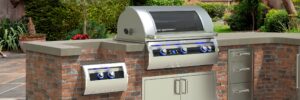Fireplaces have long been cherished for their warmth, ambiance, and the cozy atmosphere they bring to homes. Whether you have an electric, gas, or traditional wood-burning fireplace, understanding their main parts and components can deepen your appreciation for these timeless fixtures. In this guide, we’ll discuss the anatomy of fireplaces, explaining the purpose of each component.

Electric Fireplaces
1. Heating Element
Appearance: A series of coils or ceramic panels located at the bottom or rear of the fireplace.
Purpose: The heating element in an electric fireplace is responsible for producing heat. When activated, it radiates warmth into the room, making electric fireplaces an efficient and convenient heating option.
2. LED Lights or Logs
Appearance: LED lights or logs made of resin or ceramic materials, designed to resemble burning wood.
Purpose: These elements create the visual illusion of a real fire. The LED lights produce a realistic flickering flame effect, enhancing the fireplace’s aesthetics without the need for actual flames.
3. Glass Panel
Appearance: A transparent or semi-transparent glass panel that covers the front of the fireplace. Purpose: The glass panel serves as a safety barrier, preventing direct contact with the heating element and artificial flames. It allows you to enjoy the ambiance of a fire while ensuring safety, especially in households with children or pets.
4. Remote Control
Appearance: A handheld remote control or a built-in control panel on the fireplace.
Purpose: The remote control allows you to adjust the flame intensity, heat output, and even the color of the flames (in some models). It provides convenient and customizable operation for your electric fireplace.

Gas Fireplaces
1. Gas Burner
Appearance: A set of gas burners, often made of metal, positioned within the fireplace.
Purpose: The gas burner is the heart of a gas fireplace. It releases natural gas or propane and ignites it to produce flames. It provides consistent and controllable heat, making gas fireplaces an excellent heating source.
2. Pilot Light or Igniter
Appearance: A small, continuously burning flame or an electronic igniter mechanism.
Purpose: The pilot light or igniter is responsible for starting the gas fireplace. In traditional models, a pilot light stays lit continuously, while newer models use electronic igniters for instant and efficient flame ignition.
3. Logs or Fire Glass
Appearance: Logs made of ceramic or refractory materials, designed to resemble real wood, or fire glass crystals.
Purpose: Logs or fire glass enhance the visual appeal of gas fireplaces. They create the appearance of a natural wood-burning fire without the need to handle or store firewood.
4. Venting System
Appearance: Venting systems include pipes, vents, and chimney flues. Purpose: Gas fireplaces require proper ventilation to exhaust combustion gases and ensure indoor air quality. The venting system directs these gases safely outside the home while maintaining efficient combustion.

Traditional Wood Fireplaces
1. Firebox
Appearance: The enclosed area where wood is burned, typically made of firebrick or refractory panels.
Purpose: The firebox is where the actual combustion occurs. It provides insulation and protection from the intense heat generated during a wood-burning fire.
2. Damper
Appearance: A lever or mechanism usually located in the chimney or flue.
Purpose: The damper controls the airflow in the fireplace. When open, it allows oxygen to feed the fire and facilitate combustion. When closed, it prevents drafts and heat loss when the fireplace is not in use.
3. Chimney and Flue
Appearance: A vertical structure that extends above the roofline, with a flue connecting the firebox to the exterior.
Purpose: The chimney and flue provide a pathway for smoke, gases, and sparks to exit the home safely. They also create a draft that draws in fresh air for combustion.
4. Mantel and Hearth
Appearance: The decorative shelf or structure above the firebox and the hearth, the area below the firebox where the fire burns.
Purpose: The mantel serves aesthetic and functional purposes, providing a display area for decor and acting as a heat shield. The hearth protects the floor from embers and adds to the overall look of the fireplace.
Understanding these components in electric, gas, and traditional wood fireplaces not only deepens your appreciation for these heating fixtures but also helps you operate them safely and effectively. Whether you prefer the convenience of electric, the efficiency of gas, or the timeless charm of wood, fireplaces remain an inviting focal point in homes, bringing warmth and comfort to your living space.



